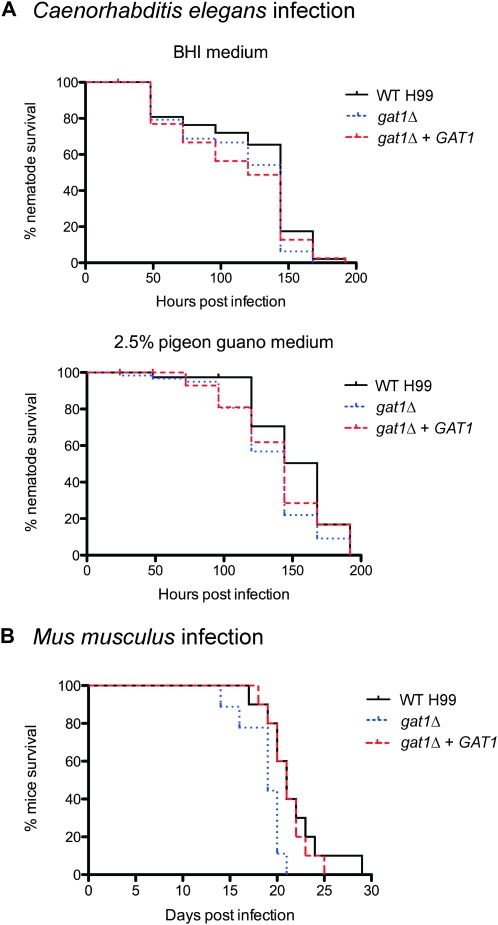Figure 8.—
The gat1Δ mutant kills C. elegans as efficiently as wild-type H99, but exhibits modestly enhanced virulence in a murine host. (A) C. elegans infection: ∼50 nematode worms were transferred to a lawn of wild-type, gat1Δ, or gat1Δ + GAT1 cells as the sole food source on both BHI and 2.5% pigeon guano media, and survival was monitored at 24-hr intervals. There was no observable difference in C. elegans killing by all three strains on both BHI (wild type vs. gat1Δ, P = 0.1066; gat1Δ vs. gat1Δ + GAT1, P = 0.9230) and pigeon guano media (wild type vs. gat1Δ, P = 0.0250; gat1Δ vs.gat1Δ + GAT1, P = 0.3614). (B) Mus musculus infection: 10 mice were infected intranasally with either 1 × 105 cells of wild type, gat1Δ, or gat1Δ + GAT1 strains, and survival was monitored daily. Mice infected with the wild-type and gat1Δ + GAT1 strains progress to morbidity at the same rate (wild type vs. gat1Δ + GAT1, P = 0.6691), whereas mice infected with the gat1Δ strain progress to morbidity more rapidly (wild type vs. gat1Δ, P = 0.0151).

